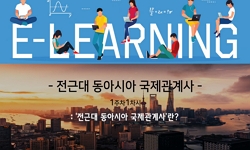One of the notable changes in the 2022 Revised Curriculum in Korea is the restructuring of subjects. The discontinuation of East Asian History and the revision of the College Scholastic Ability Test (CSAT) have resulted in Korean History remaining as ...
http://chineseinput.net/에서 pinyin(병음)방식으로 중국어를 변환할 수 있습니다.
변환된 중국어를 복사하여 사용하시면 됩니다.
- 中文 을 입력하시려면 zhongwen을 입력하시고 space를누르시면됩니다.
- 北京 을 입력하시려면 beijing을 입력하시고 space를 누르시면 됩니다.

2022 개정 교육과정 <한국사>의 고대 한중 관계사 구성과 서술 분석 = A Critical Analysis of Ancient Sino-Korean Relations in the 2022 Korean History Curriculum
한글로보기부가정보
다국어 초록 (Multilingual Abstract)
The newly introduced nine Korean history textbooks exhibit significant diversity, making it difficult to identify commonalities. They incorporate numerous visually striking materials; however, there is a tendency to compensate for narrative gaps by excessively listing visual elements without contextual coherence. Furthermore, in the ancient Korea-China relations section, the terms tributary and investiture have been omitted and replaced with the vague term exchange, resulting in potential misunderstandings among learners. In response to these issues, this study reassesses academic discussions on the tributary and investiture system and proposes effective learning strategies.
By doing so, this paper aims to serve as a catalyst for a more informed approach to historical education, fostering a well-balanced response to contemporary challenges beyond the isolated perspectives of Korean history, East Asian history, and history education scholarship.
One of the notable changes in the 2022 Revised Curriculum in Korea is the restructuring of subjects. The discontinuation of East Asian History and the revision of the College Scholastic Ability Test (CSAT) have resulted in Korean History remaining as the sole history subject. This study examines the structure and narrative of ancient foreign relations in Korean history textbooks, aiming to move beyond a nation- centered perspective and understand Korean history within the broader East Asian world. By analyzing the composition and descriptions in textbooks, this research seeks to provide insights into how historical education has adapted to these curriculum changes.
The newly introduced nine Korean history textbooks exhibit significant diversity, making it difficult to identify commonalities. They incorporate numerous visually striking materials; however, there is a tendency to compensate for narrative gaps by excessively listing visual elements without contextual coherence. Furthermore, in the ancient Korea-China relations section, the terms tributary and investiture have been omitted and replaced with the vague term exchange, resulting in potential misunderstandings among learners. In response to these issues, this study reassesses academic discussions on the tributary and investiture system and proposes effective learning strategies.
By doing so, this paper aims to serve as a catalyst for a more informed approach to historical education, fostering a well-balanced response to contemporary challenges beyond the isolated perspectives of Korean history, East Asian history, and history education scholarship.
동일학술지(권/호) 다른 논문
-
역사 인물을 통해 삶을 묻다 -송인주, 교사 교육을 위한 역사 인물 프로젝트, (양서원, 2025)-
- 역사교육학회
- 이해영
- 2025
- KCI등재
-
통합사회 교육과정에 대한 비판적 시론 -역사 영역의 재구조화를 중심으로-
- 역사교육학회
- 천하은
- 2025
- KCI등재
-
중학교『역사②』교과서 고려-여진(금) 관계의 ‘실리적 사대’ 서사에 관한 비판적 고찰
- 역사교육학회
- 김민정
- 2025
- KCI등재
-
- 역사교육학회
- 홍성구
- 2025
- KCI등재




 KISS
KISS






